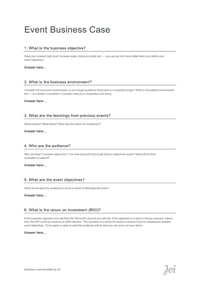Planning events is very rewarding but can be very time consuming — it’s always more time consuming than you think it will be. There are tools that can help, some generic productivity tools are useful but don’t fully serve the unique requirements of events. That's why we made Joi.
Joi is a productivity tool specifically designed for events. By automating workflows and mundane tasks, Joi can make you up to five times more productive. If you are interested in learning more about Joi go to www.joi.events or book a demo.



